The State of Content Marketing 2015 and the prospects for 2016


New report reveals content marketing budgets, benchmarks and the key trends for 2016 in the UK and other countries
Content marketing is one of the most important component parts of digital marketing. Every year we survey our members asking what they think will be the most important marketing trends of the year ahead, and content marketing has come top for three years in a row and is predicted to be a top marketing trend of 2016, vying with Marketing Automation for the top spot.
Each year the Content Marketing Institute survey a wide range of marketers working across many industries. This 6th annual survey is a large-scale survey overall since they surveyed 3,714 people from businesses of all sizes, you can see the full research which covers B2B, B2C and Not-for-profit businesses in the United States and Australia overall in the CMI Content Marketing research section. In this post, we’re focusing on the report titled 2016 UK Content Marketing trends. The report we describe here is a smaller survey of just 133 respondents who said they were for-profit marketers in the UK (65% B2B, 11% B2C, and 24% both B2B+B2C). For comparison, our survey of trends of content marketing in EMEA with HubSpot had over 700 respondents.
Usage Up
Almost every single form of content marketing was used more this year than ever before. Photos were up 12%, videos 10% and infographics 10%. Interestingly there was a 30% increase in the use of promoted posts, which is probably a result of needing to do more to boost content now that there is such a glut of it being created. The survey found that now 64% of marketers were paying to promote their content, compared to just 34% the year before. This partially explains why marketers are spending a higher percentage of their budgets on content marketing. The average for 2015 is now 29% of total marketing budget, compared to 26% the year before.
Over the whole sample, 89% of marketers used content marketing, up from 85% last year. Five years ago content marketing was new and exciting. Now it is very much the norm, making it far harder to stand out.
Better strategy and planning required to boost effectiveness
In total, 32% of marketers thought that their companies content marketing was mature or sophisticated, and of those people, 78% thought their content marketing was highly effective. This suggests how important it is to plan, manage and optimise their content marketing, as only 22% of those who reported being intermediately skilled with content marketing said they found their content marketing highly effective. Even more telling, only 1% of those who were only just starting out with content marketing reported finding it highly effective. It is no longer enough to just be ‘doing’ content marketing. You have to accurate measurement, integration across the businesses and a well-planned strategy in order to succeed.
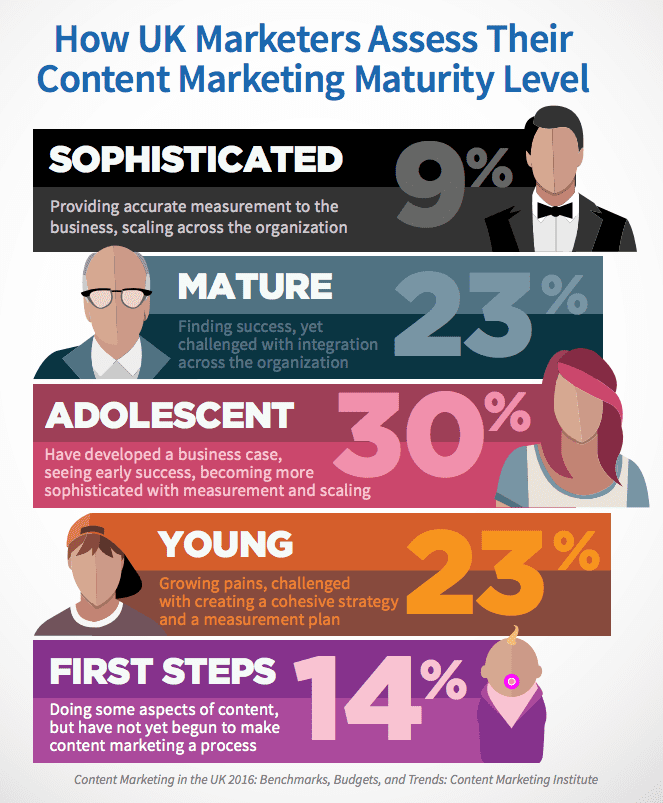 54% of marketers think their organisation has clarity on what a successful content marketing program would look like, but this varies considerably by how sophisticated the organisations content marketing efforts were. 84% of those who thought their content marketing efforts were sophisticated/mature had clarity, whilst only 27% of those just starting out did.
54% of marketers think their organisation has clarity on what a successful content marketing program would look like, but this varies considerably by how sophisticated the organisations content marketing efforts were. 84% of those who thought their content marketing efforts were sophisticated/mature had clarity, whilst only 27% of those just starting out did.
Overall, 88% said they planned to create more content in 2016, whilst only 11% said they planned on creating the same amount and a tiny 1% thought they would create less. Which suggests 2016 is going to be a busy year for content marketers!
Many still lacking a content marketing strategy
We would have been shocked to discover how few organisations had a documented content marketing strategy, but our surveys show a similar picture! This report showed that
Only 37% had a strategy that was written down, whilst a further 42% had one that was not documented.
Surely this situation is not sustainable. Whilst it is good that so many have got strategies in place, having one that is not documented is asking for disaster. What happens if several senior marketers leave the business? Sickness, maternity leave, or talent getting poached by competitors all could leave you with your strategy literally walking out the door if it is not well documented. Even just staff being on holiday can leave the rest of the team clueless as to the strategy if it is not documented.
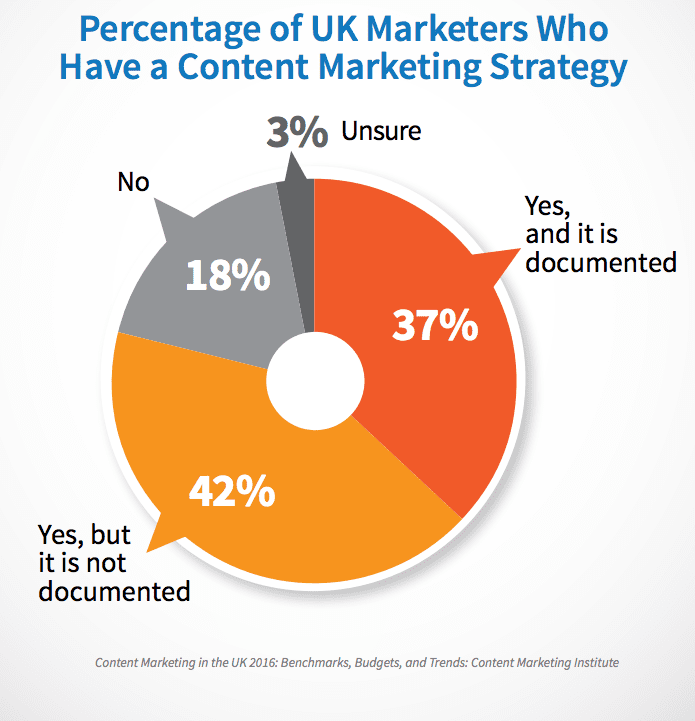
Having an editorial mission statement was slightly less common than having a content marketing strategy. Only 32% had a documented editorial mission statement, although again a considerable number (36%) had a mission statement but it was not documented. This is an easy situation to rectify, get it written down folks!
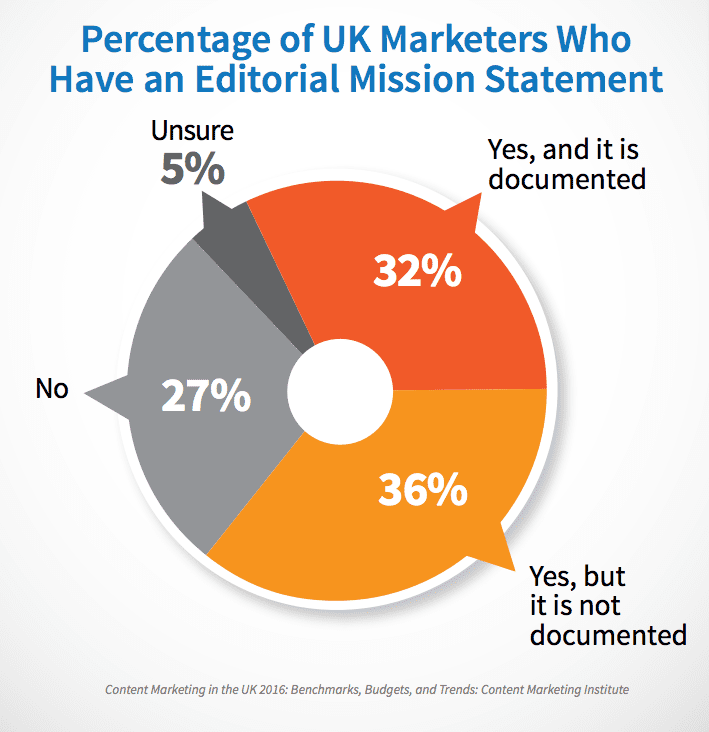
UK content marketing tactic usage
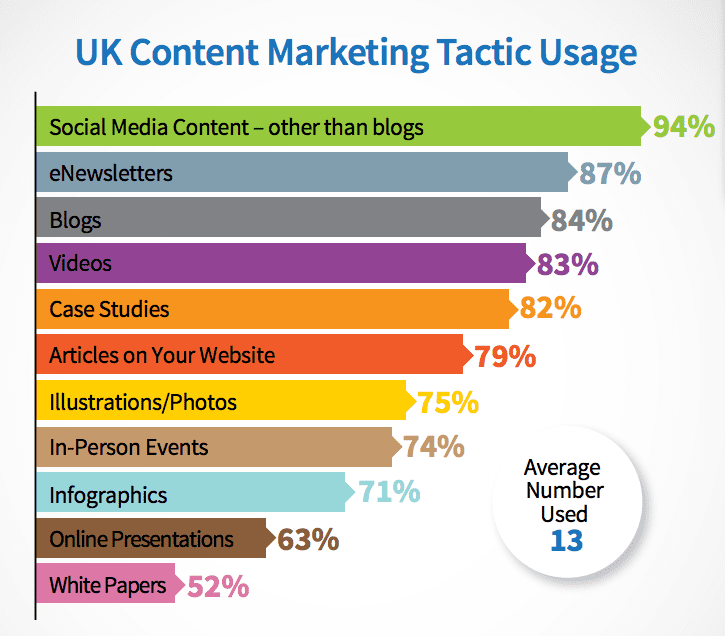
Social media content, blogs and newsletters remain highly popular forms of content marketing tactics. My prediction for 2016 is that the glut of content will mean the less commonly utilised tactics will stand out and be more effective, thus drawing more usage. We may also see new forms of content marketing added to the list, such a 3D video or marketing apps.
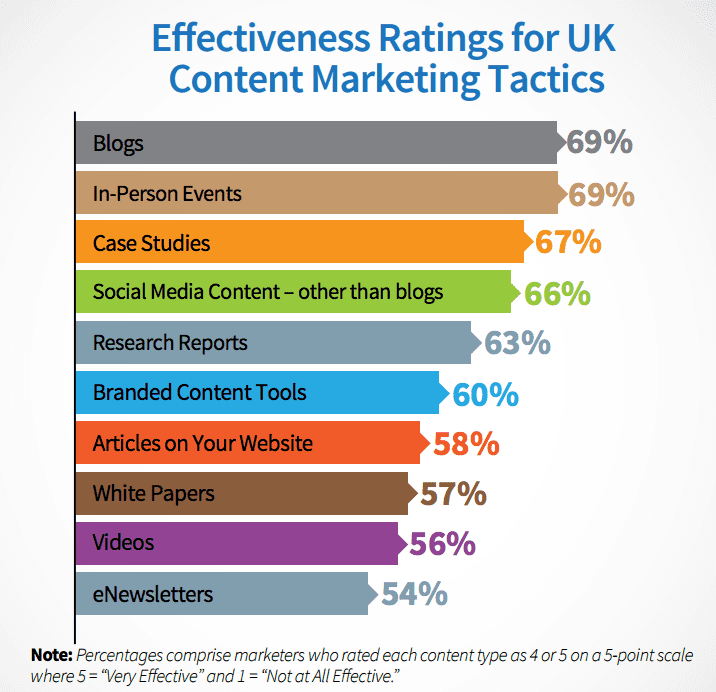
Blogs lead the way when it comes to the most effective content marketing tools, so if you aren’t blogging already, you should plan to in 2016.
The lack of reported effectiveness of enewsletters in contrast to their popularity is interesting. It may be that you need to blend your enewsletters with other forms of content marketing to make them more interesting to your audience and thus make them more effective. Pointing to recent blog content, research reports or videos is likely to engage your audience better than a newsletter which just lets them know about goings on in your organisation.
Social media usage
Social media marketing is another area of marketing that five years ago was new and exciting, but now it’s fairly standard practice. Almost all marketers surveyed were using some form of social network. LinkedIn led the pack, which I suspect is because many B2B marketers see all platforms other than LinkedIn as being only good for B2C brands.
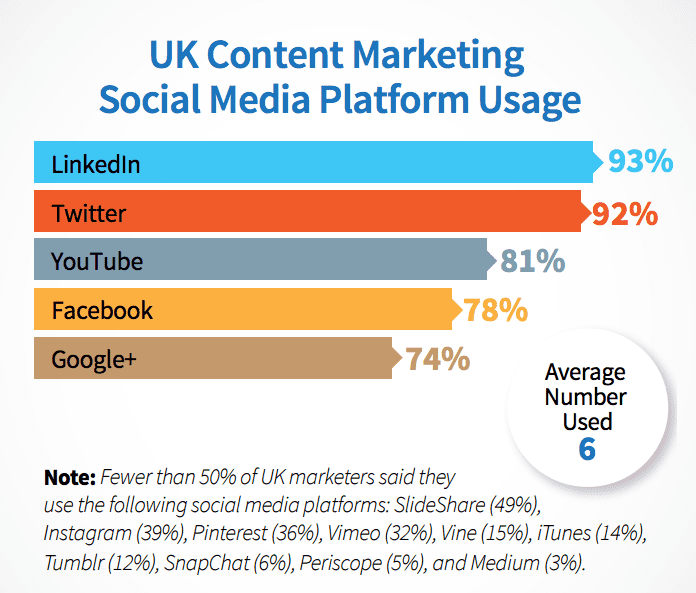
Take up of some of the newer social media platforms was considerably less high. Pinterest was being used by only 36% of those surveyed, whilst SnapChat was being used by only 6%. Whilst obviously SnapChat won’t be any good for B2B marketers, many advertisers are finding it highly effective for targeting a millennial audience, so it may be one to consider if that is an audience your company wants to capture.
Key challenges
Producing engaging content was the most common challenge faced by content marketing departments in 2015, closely followed by measuring content effectiveness. The first problem is one that requires creativity whilst the seconds needs technical knowledge. Training up staff may be a good option to overcome these problems. Bringing in more talent may also be an effective way to boost your content creation program and overcome many of these challenges, although 25% of respondents did report that finding skilled content marketing professionals was major challenge.
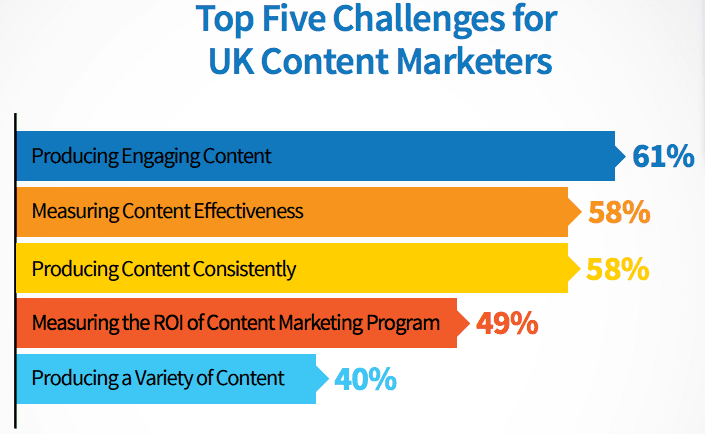
For more insights on content marketing see the content marketing institutes new report on SlideShare:
From our sponsors: The State of Content Marketing 2015 and the prospects for 2016



